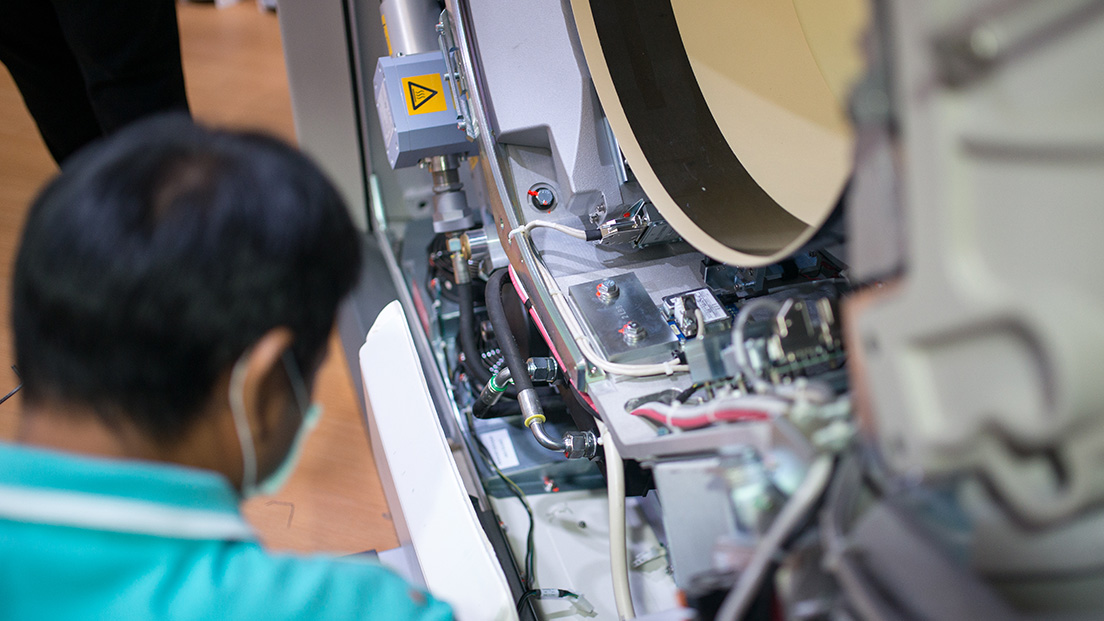MRI diagnostic equipment
Medical diagnostic imaging machines are identified according to their type of use and the technology they represent. There are many different imaging technologies used in healthcare facilities, depending on patient needs or extent of an injury, but the most common medical imaging machine used today is the magnetic resonance imaging (MRI) machine. MRI machines are rated in units called “tesla” which represents the strength of the magnetic field produced by their superconductive magnet. MRI machines range in strength from 0.2T to 3.0T. Another example is the computerized tomography (CT or CAT) scan, a type of X-ray machine that produces cross-sectional images or slices of the body. CT scanners are high-tech and require constant calibration to operate properly. With these machines, a computer model of an image is built using rapid successive low energy scans.

Hazards
Loss experiences within medical imaging devices have shown that human factors are frequently the cause, followed by electrical and electronic component failures. Below are some examples of hazards that will increase the chance of property damage and exposure to liability.
- Calibration - Like all machines that fall out of calibration, medical imaging devices will manifest imaging distortions. One of the most compelling reasons for maintaining proper calibration is to avoid the interruption of patient scheduling which is often rigorous and operates on tight timelines.
- Lack of maintenance - For MRI machines, loss of liquid helium at the cold head is a common problem which can damage the superconducting magnets inside. These powerful magnets must be cooled at around -450°F using liquid helium to prevent them from overheating and potentially exploding. Proper cold head filling procedures and required maintenance are essential to prevent damage to the magnets.
- Power quality - MRI machines and CT scanners are especially susceptible to power quality issues such as power surges.
Example replacement cost
Depending on their capabilities, medical imaging machines have a vast range of replacement values ranging from $200,000 to $9 million. Replacement costs for imaging machines can be determined using the rated “tesla.” Usually, the replacement value is $1 million for each “tesla.” For example, a 1.5 “tesla” MRI machine would have a $1.5 million replacement value, while a common 16 slice CT scanner has a replacement value of about $1.3 million.
Technician training
Radiology professionals should be knowledgeable in running daily diagnostics on medical imaging systems which includes calibration checks and machine adjustments. A well-documented training program should be established since a lack of proper technician training can result in significant machine damage and an extended period of downtime.
Here are helpful maintenance tips to minimize the potential for loss:
- Electrical equipment - The maintenance and testing program of the electrical equipment should be documented and include routine checks of electrical equipment rooms to ensure no combustibles are being stored and the working environment is cool, clean and dry. Electrical switchgear should be maintained in accordance with the manufacturer’s recommended maintenance practices with mechanical exercising of circuit breakers annually.
- Surge protection - Both the medical imaging machine, and its corresponding electrical branch circuit should be fitted with a surge protective device (SPD) to prevent damage caused by internally generated and utility grid generated power surges.
- Service contracts - MRI machines require a significant number of calibration adjustments and maintenance during their service life, which should only be performed by qualified service technicians. There are a variety of maintenance service contracts available even for older equipment.
Additional resource:
